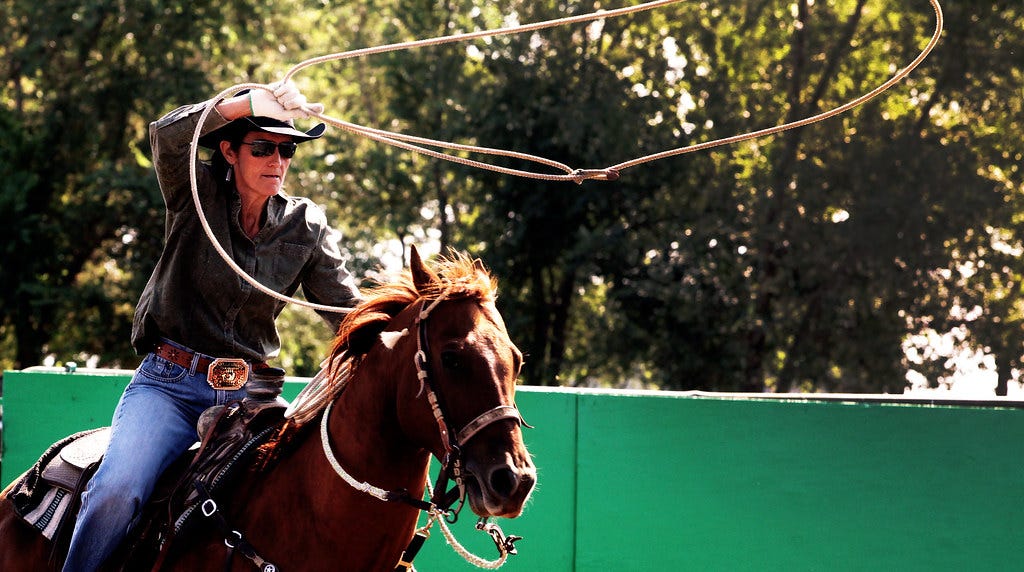What Can We Learn from Harney County? The Case for Investing in Collective Impact
The Oregon Way is alive and well in Harney County. Now more than ever, collective impact models such as the High Desert Partnership are needed to address our most persistent challenges.
Editor’s Note: Do your part to Sustain the Way!
21 Oregonians have gotten us to $1,045 - keep the momentum going so we can hire a part time editor.
Will you send $20?
Donate here or subscribe below to create a part-time editor position.
Thank you! - kevin

Principal at Coraggio Group, a strategy and leadership management consulting firm. Former Director of Business Oregon, the state's economic development agency.
To me, the Oregon Way is about learning from those with different experiences—collective improvement through a diversity of perspectives and ideas. In thinking about what I could contribute to this ideal, I was inspired by Brenda Smith’s recent Oregon Way post: Take a walk in my boots. It resonated with me not because we have a shared lived experience—I was born, raised, and currently live in Portland—but because from my 15+ years in economic development, most recently as director of Business Oregon, I have come to realize that many of our state’s most innovative ideas were tried and tested in rural Oregon.
My last Oregon Way blog post—A Political Bridge: A Focus on Economic Opportunity—highlighted the persistent economic challenges faced by our rural communities: stagnant job growth, high unemployment, lower wages, and persistent poverty, to name a few. However, as the old adage goes, “necessity is the mother of invention.” Rural Oregon, and communities like Harney County highlighted by Brenda, are entrepreneurial out of necessity, not inherent privilege. They are innovative because they are tried and true problem solvers, not because they sit on access to an abundance of resources.
The question then becomes: what can we learn from communities like Harney County and organizations such as the High Desert Partnership that will make Oregon as a whole better? While there are likely many answers to this question, I’d like to highlight Harney County’s approach: their commitment to collective impact.
The Stanford Social Innovation Review (SSIR) describes collective impact as:
The commitment of a group of important actors from different sectors to a common agenda for solving a specific problem. [A] systemic approach…that focuses on relationships between organizations and the progress toward shared objectives.
A great example of collective impact in action is the High Desert Partnership’s Idea-to-Ownership program, which connects entrepreneurs in Harney County—one of the most isolated and poorest in the state—to financial and legal support, technical assistance, and business education. Through this program, the High Desert Partnership has brought government, nonprofit, and Tribal economic development to the same problem-solving table.
The Partnership includes the Burns Paiute Tribe, Harney County Economic Development, Eastern Oregon University, Business Oregon, and local business service providers. Core services provided by the program include a youth entrepreneur summer camp, after-school programs for youth to launch a business, workshops for adult entrepreneurs, and culturally specific business education programs for Burns Paiute members. Through collective impact, the Idea-to-Ownership program is delivering comprehensive and coordinated support to local entrepreneurs.
As demonstrated by the High Desert Partnership, collective impact is a coordinated alignment of values, resources, and intent of distinct organizations. SSIR’s research shows that successful collective impact initiatives typically have five conditions that together produce true alignment and lead to powerful results:
Common Agenda - Participants have a shared vision for change, one that includes a common understanding of the problem and a joint approach to solving it through agreed upon actions.
Shared Measurement Systems - Collecting data and measuring results consistently across all participating organizations ensures that all efforts remain aligned and enables the participants to hold each other accountable.
Mutually Reinforcing Activities - Collective impact initiatives depend on a diverse group of stakeholders working together, not by requiring that all participants do the same thing, but by encouraging each participant to undertake the specific set of activities at which it excels in a way that supports and is coordinated with the actions of others.
Continuous Communication – Regular communication and a commitment to creating a common vocabulary.
Backbone Support Organization - Coordination takes time, and none of the participating organizations has any to spare. The expectation that collaboration can occur without a supporting infrastructure is one of the most frequent reasons why it fails.
The COVID-19 pandemic and related economic and business disruptions have exposed the long-standing fragility of our systems and institutions, particularly for people and communities from non-privileged backgrounds. At the same time, the many corporate, non-profit, philanthropic, and public sector organizations that should serve as the drivers of recovery and leaders of change are facing a future of significantly limited resources. Historically, many have also operated in isolation—seeking to “solve the problem” on their own as a means of taking credit, assigning value to their programs, or more conveniently measuring ROI.
The Oregon Way is alive and well in Harney County. Now more than ever, collective impact models such as the High Desert Partnership are needed to address our most persistent challenges. As a state, let’s take this opportunity to learn from the High Desert Partnership and their commitment to collective impact and investing in programs and initiatives that bring together our public, private, Tribal, and non-profit sectors to solve our most vexing problems.
Thank you for leading the way, Harney County!
*************************************
Keep the conversation going:
Facebook (facebook.com/oregonway)
Twitter (@the_oregon_way)
Connect with Chris:
@Chris_C_Harder


